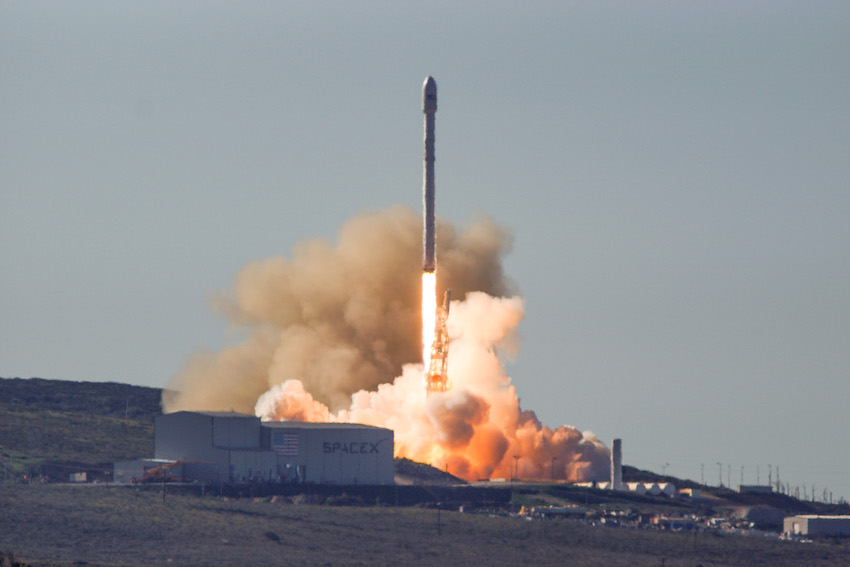Bryce Foshee and Andrew Rieker study history of rocket science, rocket assembly
High schoolers learn the physics behind rockets
Our world today runs thanks to some incredibly complicated machines; to name a few, the phone or computer you are reading this on, nuclear power reactors, aircraft and the power grid. A college-level education is necessary to design and build these.

Despite its reputation, rocket science is not the exclusive domain of adults. Legendary rocket engineers Robert H. Goddard, Wernher Von Braun, Hermann Oberth and Tory Bruno each started their experiments in high school.
For all its complexity, math and foreign vocabulary, the science of rockets is simple at its core. Rockets are vehicles that gain speed by shooting gas downward. The goal of rocket science is to make these machines as effective as possible.
All rockets take advantage of Newton’s third law of motion, which is commonly stated as, “for every action, an equal and opposite reaction.” You can feel this effect for yourself by throwing a ball. A ball feels heavier as one accelerates it. This feeling is actually a force, pushing back onto your hand. Rockets throw gases rather than solid objects, but the force is the same.
To take the most advantage of Newton’s third law, rocket engines accelerate as much gas as they can, as quickly as possible. Two factors determine how effectively an engine can do this: the pressure and temperature of the gas inside the combustion chamber and the shape of the nozzle.
At this point, it should be mentioned that not all rockets are created equal. Two main types exist: liquid-fueled rockets and solid-fueled rockets. (Others engines, like hybrid, nuclear and ion are under development or unsuitable for propulsion on Earth.)
Each type has their advantages. Liquid fuels pack more reactivity per unit mass, which means hotter exhaust. Their downside is that fuel must be pumped into the combustion chamber at high pressure.
Solid-fueled rockets, on the other hand, start out with all their propellant already inside the combustion chamber. A solid motor might have no moving parts, compared to the complex (and heavy) pumping system of a liquid rocket.
In the following podcast, juniors Bryce Foshee and Andrew Rieker talk about the construction of rockets.
Solid-fueled rockets achieve greater simplicity

For the sake of their simplicity and cheapness, most amateurs choose solid rockets.
A solid motor can be made of just four parts: a chamber, a grain, a nozzle and an ignitor.
The combustion chamber is the wall of the rocket. Chamber walls need to be exactly the right strength; too thin, and the motor will fail; too strong, and the motor will turn into a bomb if the nozzle is blocked. Common choices for materials include PVC, aluminum or steel.
Solid rockets take their name from their solid “grains”, the fiery part of the rocket. The different chemicals that make grains fall into three categories: oxidizers, fuels and additives. Their chemistry is generally complex, even for a simple propellant like sugar/potassium nitrate, which burns into seven different products.
Grain chemistry determines the burn rate of a propellent, measured in length per time. This factor is crucial when deciding what shape to make the grain itself. A motor should have a short total burn time, but not too short or the pressures will reach explosive levels. To make grains burn faster without increasing the burn rate, one can cast different shaped holes in the center, so the grain burns from the inside out rather than from the top to the bottom.

The nozzle functions to accelerate the exhaust and direct it straight down. A De Laval nozzle accomplishes both these with a two-part design. The first section, called the converging section, starts with a wide diameter and progresses to a smaller one. This means the gas had less cross-sectional area to flow through, so it must speed up to maintain the same flow rate.
The converging section is narrowest at the throat, which is where gas flow should reach supersonic speed. When gas exits the throat, it still has tremendous temperature and pressure. A lot of energy would be wasted if the nozzle ended now.
To fully exploit the energy latent in the exhaust gas, nozzles have a diverging section. As the gas naturally expands, the diverging section, the diameter of which grows, deflects the gas back down.
A simple motor made of just a combustion chamber, grain and nozzle will fly, if you can start the grain burning. While the job of the ignitor sounds simple, making one is rather difficult. In our last blog post, Andrew detailed the difficulties he encountered with electrical ignitors.
Before I became an amatuer rocket scientist, my assumption was that rocket science was too difficult to learn. Now I know that the challenging part of rocketry isn’t so much making a rocket, but making a rocket that works as designed.
In our next blog, we’ll talk about what it takes to actually launch a rocket. As always, our goal with these blogs is to inspire the reader to join us in building rockets. A great book to read is Bertrand Brinley’s “Rocket Manual for Amateurs.”
Read the previous blog, BLOG: Amateur rocketry No. 2: Juniors begin experimentation, learn through trials.
Bryce Foshee can be reached via twitter @brycer_f and via email.
Andrew Rieker can be reached via email.




